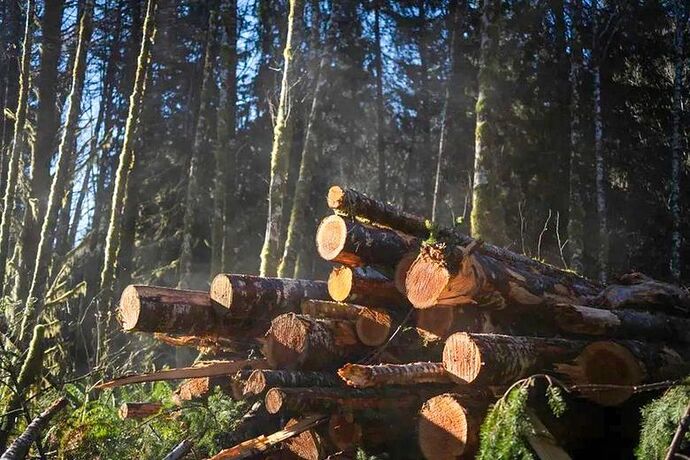Forest products companies have endured a wild stretch over the past two years, with lumber prices quintupling during the pandemic and then fading back to something close to normal.
The extreme price swings are another sign of the supply chain chaos and economic upheaval that accompanied COVID-19.
Soaring lumber prices were a harbinger of coming inflation when they began their steep upward climb two years ago. Now, a rapid fall could help moderate historic inflation in other sectors that use lumber.
Lumber prices soared from around $300 per 1,000 board feet of lumber in the weeks before the pandemic hit in 2020 to more than $1,600 in the spring of 2021.
Demand also soared in 2020 amid an uptick in homebuilding — an industry that wasn’t disrupted by COVID-19 health restrictions — and a surge in home-improvement projects by do-it-yourselfers. People across the country were cooped up at home with fewer alternatives for spending their wages and pandemic relief payments.
At the same time, the lumber supply was disrupted by a shortage of truck drivers and millworkers. The resulting squeeze pushed prices to astronomical levels.
“Prices skyrocketed from what was actually a pretty stable trend for decades,” said Brandon Kaetzel, principal economist at the Oregon Department of Forestry.
Prices then went into steep decline as producers unsnarled their supply chains and rising interest rates cut into home sales. That, in turn, reduced home construction and lumber demand.
It’s great for lumber producers when prices rise, but the upside was short-lived before prices abruptly fall back to earth. Current prices are around $500 per 1,000 board feet, up only modestly from right before the pandemic — and down slightly from 2018 and 2019.
Some companies couldn’t meet peak demand during the pandemic because of their own labor or supply constraints. Others, Kaetzel said, took advantage of the brief surge to invest in mill upgrades.
“I’d hesitate to say it was a windfall for anybody,” he said.
Not among independent Oregon mills, anyway. Boise Cascade shares are up more than 40% over the past two years, climbing twice as fast as the broader stock market.
And higher prices have been good for the Oregon Department of Forestry and the counties that receive state timber revenue, according to Jason Cox, a spokesperson for the state agency. He said stumpage prices — the price timber companies pay for the right to harvest trees — remains up about 25% from last year.
“There’s a real public benefit there when those timber prices are higher. Because that translates to higher revenue to counties on the same (amount) of timber,” Cox said. “We’re in a better position to take on proactive projects on things like forest health, conservation.”
